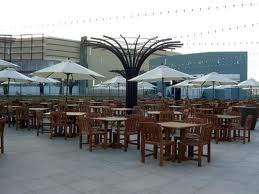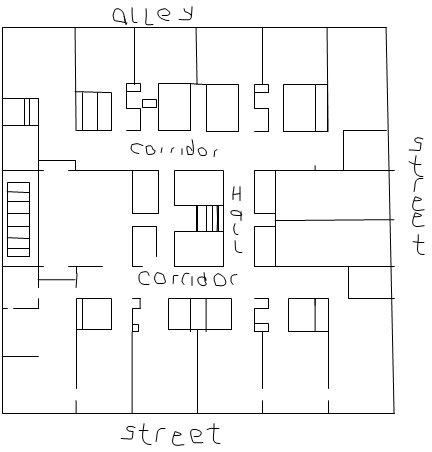Food court is a common area within a building, facility or a premise situated adjacent to counters consisting of a number of vendors located at food stalls from where customers orders their food (Milshtein, 1999, p.12). The meals are ordered from any of the vendors after which the ordered samples are taken to a common dining area for the respective customers.
The food court outlet serves as a very important icon as it offers different samples of fast food to the customers located in a locality. The availability of diverse samples allows the customers to sample their different favorite food stuffs and eat them in the same area. Some food court outlets have a variety of food stuffs they offer to customers while others offers a limited range of food stuffs.
In addition, there is other food court which offers same commodity throughout to the customers. They only offer a specific product to their customers (Beach, 2000, p.22-23). This is the case with the food court outlet in question. The court is scheduled to specialize with dishes made from potatoes only. The design therefore will capitalize on fried potatoes a variety widely preferred than the baked or boiled potatoes.
The design itself
The food court outlet will specialize with the sale of fried potatoes, a fast food which is immensely purchased by the customers from the area. This is notable from the idea that, kiosk sellers are currently experiencing an explosion sale of similar commodities the court is planning to start. The design should be charismatically planned to cater for all the customers’ needs (Johnson, 1997.p32).
The size
The size of the food court outlet should be 50 square meters. This is a very economical space as it will accommodate all the customers from the locality. In addition, the space will not only accommodate the customers but also the equipments and the employees of the food court as well as catering for future expansion. Indeed, according to the buying power of the customers and the quest for other products, the court will expand in future.
Planning the physical space
Function
For a food court outlet to be successful and work without confines and distractions, the physical space should be an issue of consideration. This concerns the functionality of the food court outlet. According to the Food and Beverages Management the customers are described to see many things within an hour than the management can see within a period of one year (Food & Beverage Management, 2010, para. 2).
Therefore, the management should plan the physical space in a manner that is appealing to the customers. The food court outlet should be created with a focused mind particularly focusing on the creation of value. According to Food and Beverage Management, value creation process is necessary as it determines the success of the court.
Selection of a good location is a vital aspect when setting up a food court outlet. The location determines who will be the potential customers of the court. To take advantage, the food court outlet should be located in buildings in which huge businesses are located like it is the case with the food court outlet being designed.
Form
Also in planning the physical space, making the outlet to look good should be encouraged. The physical form should be designed in a way that will attract a huge crowd of customers. This makes the customers to admire the place thus desiring to buy from there. Food court outlets should not be fully covered as the covered outlets are not attractive to the customers.
Interestingly, the food court outlet being designed is for the sale of potato products in which customers regard taking their stuffs from an open location in order to have a good and wide view of the vicinity (Viet, 2002, p. 3). Many leading world food court outlets operate in an open location allowing the customers a wide view of the environment. This makes the customers flock in them due to the comfort they experience from there.
The menu
Menu is a vital aspect in every food court outlet as it displays all the type of stuffs offered and their respective prices (Olive Gardens, 2010, p.1). The food court outlet will be offering products made from potatoes. Commonly, fried potatoes will be the principal food stuff offered by this food court outlet.
The stuff properly suits the customers in this vicinity and therefore the menu must be properly programmed for. The menu should address specifications of all classes of the customers in the vicinity. According to this locality, the customers are categorically ranging from children to adults, high class and the middle class earners among others. Consequently, the menu should be drafted to cater for all these and should look as follows;-
- Specials………………………
- Lunch…………………………
- Dinner…………………………
- Beverages……………………
- Wines…………………………
- Kids……………………………
- Dessert………………………
- Nutrition…………………….
Despite catering for the diverse classes of customers and their respective specifications, the menu should focus on the take away and take in customers. Ultimately, all the customers will be accommodated in the menu of the food court outlet.
The plan
Below are examples of plans of food courts designed to serve diverse customers.

The food court outlet should be spacious enough to prevent any congestion that may arise in the future. Also, the plan should allow logical arrangements to avoid mixing the serving area with the cooking area which can cause inconveniencies.

The kitchen
Kitchen is something which is a must in every food court. The kitchen should be located in a location where it will not disrupt the comfort of the customers while taking their foods. In addition, basing on the diverse customers of this food court outlet, it is very important to have different equipments for different customer requirements (Heinemann, 1998, p.392).
The menu is covering items such as the special fried potatoes consumed by high class customers, for dinner, lunch among others which requires different equipments for preparation and cooking. The kitchen should be fully equipped with these items to ensure convenient.
Storage area
The food court will be dealing with many and huge items on daily basis and to avoid shortages, there will be a responsible person in charge of checking the level of stock left. It is embarrassing for this kind of a court outlet getting short of a commodity that is in high demand.
In addition, some items are perishable thereby posing danger to the firm if not properly stored (Urban Land Institute, 1999, p.179). To avoid instances of damage, a refrigerator will be purchased and located at a remote location to serve all the needs of the perishable items.
The serving area
This place should be clean and well planned for. A wide table should be erected at a strategic position particularly at the centre or at a corner to support a maximum number of customers to their best satisfaction.
Customer satisfaction is the drive for many successful food court outlets. Therefore, when the customers are served with their respective orders, there should be a place from where to take their foods from. This should be equipped with comfortable chairs and tables sufficient to support the number of customers in the court.
Competition
Having considered all the above, it is important to gauge the competition from the competitors. Competition is a threat to new businesses which are trying to put their heads in the market (Heinemann, 2005, p.3). At this stage, the prices of the respective items to be sold are priced correspondingly in the menu.
Price is a best weapon in any competitive environment. To run away from the competition and attract a huge number of customers, the price will be set slightly below the market price. This strategy will compel many customers to leave their old sellers to join this new court.
In addition, the range of items in the menu plays a very important role when it comes to attracting customers. The contents in the menu should harmoniously fit the daily demand as well as the diverse customers in the market. The food court outlet could in the near future add more items in the menu as the only way of outdoing the competitors. This will also lock the kiosk sellers from the business forcing them to surrender the competition.
Evaluation
This should be done before the food court outlet starts its operations to ensure all areas are vividly addressed. The evaluation should be highly recommended at the critical areas as these are the areas that create the foundation for a successful enterprise. Also, evaluation of concepts is very important.
From this evaluation, it is possible to tell whether the concept will work well as well as fit harmoniously with the tenants. In addition, the appearance of the food court outlet is also essential for evaluation. Once the business is fully established, it will be imperative to evaluate whether the menu is delivering. Evaluating at this stage is vital because, the weaknesses are established before it is too late and addressed accordingly.
Reference List
Beach, G. 2000. High school food courts: a new evolution in students dining. School planning and management. Vol. 39, issue 8, pp.22-23.
Food & Beverage Management. 2010. Critical success & failure factors in food court design and food court management. Web.
Heinemann, B. 1998. Food and beverage management. Manchester: Bernard Davis.
Heinemann, B. 2005. Strategic operations management. California: Steve Brown.
Johnson, F. 1997. Selected and current works; master architect series III. New York, America: Images Publishing.
Milshtein, A. 1999. Bye bye cafeteria-hello restaurant-style dining. Stamford University: Amy College Planning and Management.
Olive Gardens. 2010. When you’re here, you’re family. Web.
Urban Land Institute. 1999. Shopping center development handbook. Urban Land Institute: Michael D. Beyard.
Viet, N. 2002. The integration of the suburban shopping centre with its surroundings. Redmond: University of Washington.